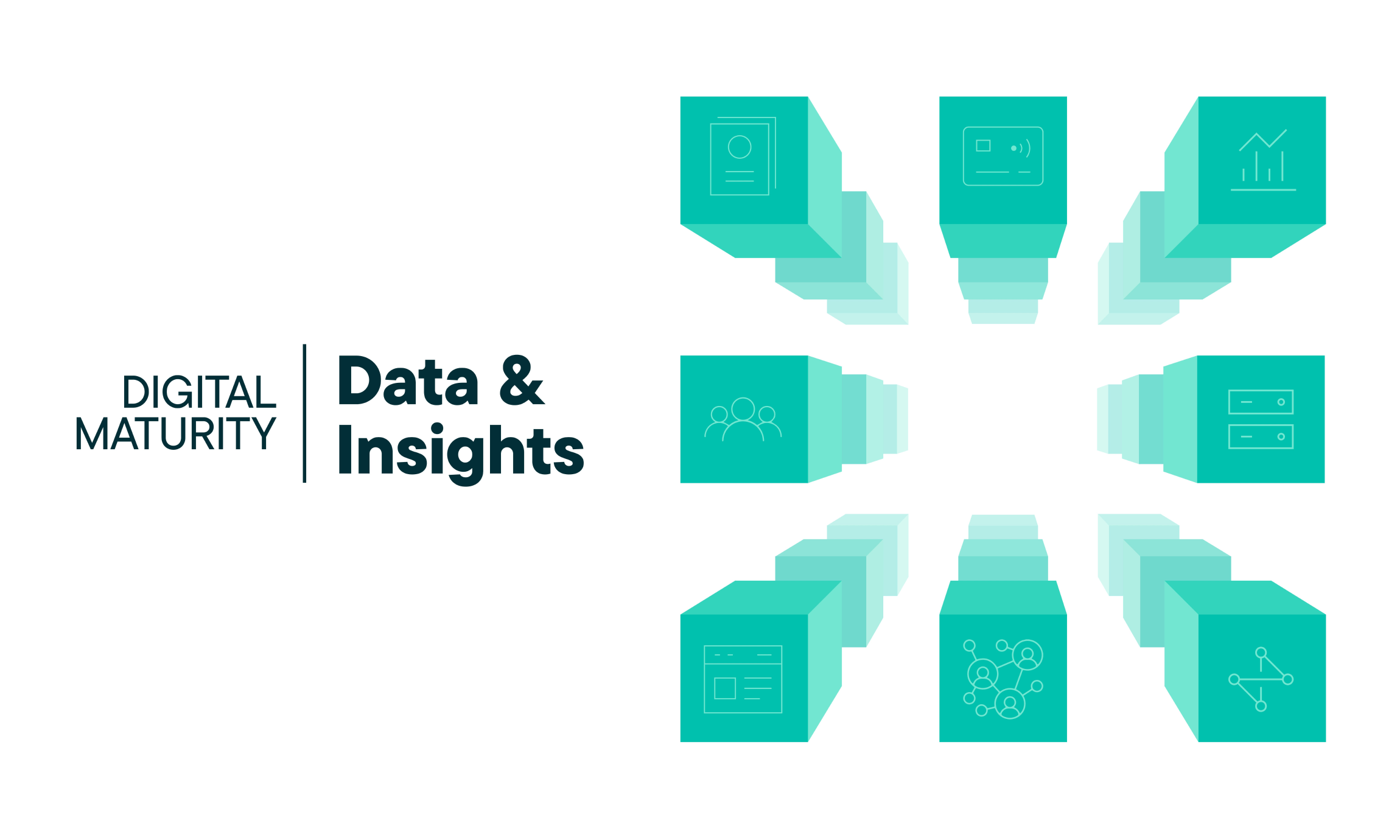
The ability to collect, structure and analyze data to generate actionable insights is a competitive advantage that many B2B enterprises going digital have not yet tapped into. While “Data and Insights” is one of the most important pillars of B2B digital maturity, it’s often overlooked, leading to data integrity issues affecting customer experiences. Let’s explore how this dimension fits into the Digital Maturity Assessment created by commercetools in collaboration with Master B2B.

Let’s start with a clear distinction: Data refers to raw, unprocessed information. That could be customer purchase history, sales performance, inventory levels or digital interactions across touchpoints. But data alone does not drive change. Insights come from analyzing that data, transforming it into a narrative that explains trends, surfaces opportunities and enables action.
In B2B, where buyer journeys are long, personalized and often involve multiple decision-makers, the ability to extract meaningful insights from data enables your company to become more efficient and be in tune with buyer expectations. It’s no wonder that forward-thinking B2B leaders are treating data not just as a byproduct of business but as a strategic asset.
Yet despite this growing reliance on data, many B2B organizations are facing a foundational challenge: Data quality. According to Precisely’s 2025 Data Integrity Trends report, 64% of organizations (B2B, B2C and everything in between) cite data quality as their top concern — up significantly from 50% just a year earlier. Even more telling, 67% of leaders say they do not fully trust the data they use for decision-making.
Clearly, leveraging data and insights is critical for any business to make the most of their digital evolution. It’s not enough to create a stunning eCommerce site if the data under the hood isn’t up-to-date — or simply incorrect. This can lead to a myriad of issues, from incomplete product descriptions to poor omnichannel experiences.
For B2B organizations investing in digital transformation and maturity to provide a top-notch customer experience, it’s crucial to invest in continuous data hygiene and governance.
The role of Data & Insights across the four stages of B2B digital maturity
How much is the organization investing in putting data into the hands of business users so they can make data-driven decisions about investments?
This is the key question when evaluating the state of your Data & Insights dimension as outlined in the Digital Maturity Assessment from commercetools and Master B2B. Every manufacturer, distributor or wholesaler sits somewhere along a spectrum of digital evolution, from a rudimentary stage to advanced. Let’s break it down:
Stage 1 – Data and Insights are out of the picture
Organizations in this stage have not launched eCommerce or have an extremely rudimentary site with limited product selection. As a result, they don’t have access to any digital business analytics that can be leveraged to increase the success of their online business. Consequently, data is siloed and largely unstructured. Reporting is manual and retroactive. Insights are minimal and decisions are often driven by assumptions.
Stage 2 – The beginnings of leveraging data in conjunction with digital tools
While in Stage 2 an organization is beginning to collect data, it’s still maturing in the Digital Tools dimension, so the business is limited in the ability to analyze and gain insights from it. Systems begin to integrate, enabling more consistent data flows. Reporting becomes more regular, and companies start using analytics to identify trends and improve operations.
Stage 3 – Data starts to enable better decision-making and buyer experiences
The organization is running a robust digital commerce site, leadership and employees have embraced the change, and buyers are taking advantage of search, chat and other features that enhance the customer experience. In addition, business users have access to data and are using it to gain insights that help them make better decisions.
In this stage, data becomes a core business asset. Predictive models and advanced analytics help with forecasting, customer segmentation and planning.
Stage 4 – Advanced use of data for outstanding purchasing experiences
B2B enterprises in Stage 4 are reaping the benefits of having implemented modern technology, usually based on composable architecture. Teams have embraced digital and fully understand how digital and non-digital channels work together to grow revenue. The organization has addressed data quality issues by building a system that ensures ongoing improvement and is using analytics to predict customer needs.
In this stage, insights are captured in real-time and embedded into every workflow. Businesses can more easily leverage AI and machine learning to clean and structure data to power personalization, automate decisions and drive innovation.
Make data strategy a digital priority
If your business is early in its digital maturity journey — or even if it’s well into expansion — reassessing your data strategy is a smart move. Start by conducting a data audit: Where is your data coming from, how clean is it and who owns it? Break down internal silos to unify data across teams and touchpoints, and put in place the tools and policies needed to ensure your data stays accurate and actionable.
Ultimately, digital maturity isn’t only about adopting new tools. It’s about developing the internal intelligence, processes and culture to use those tools effectively. And that all starts with data.
Download the Digital Maturity Assessment to benchmark where your business stands and discover practical next steps to advance your data strategy and overall digital readiness.